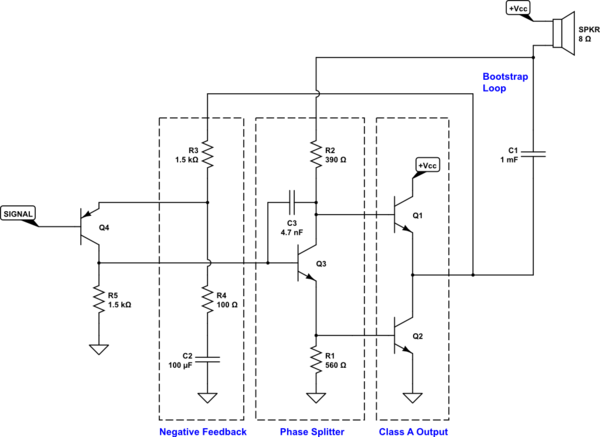From the earlier design step we have \$30\:\text{mVpp}\$ for \$Q_2\$. But we also need to account for the fact that there will also beI'd selected this operating point by completely ignoring the same \$30\:\text{mVpp}\$ variation at \$Q_1\$'s \$V_\text{BE}\$, here exactly out of phaseOhmic resistances. Because of the phase and the magnitudeThese matter. For now, this leads to just exactly enough variation in the current in \$R_2\$ and inI'm just going to randomly double the right direction, that it doubles thisearlier estimated variation over \$R_2\$. So we actually should expect to see about \$60\:\text{mVpp}\$ variation over \$R_1\$.
What about the base of \$Q_3\$? Well, we also must expectExpect another \$30\:\text{mVpp}\$ to be added to the already expectednow planned \$60\:\text{mVpp}\$ for (since\$Q_2\$. (\$Q_3\$'s collector current is going through similar variations.) So that means close to, rounded up, about \$100\:\text{mVpp}\$ for the base of \$Q_3\$ as a reasoned plan.
That'sSo that's the drive for \$Q_3\$. The entire output section and splitter combined must be driven by a voltage signal that cannot vary by more than \$100\:\text{mVpp}\$. We also know that the center of this voltage must be approximately two \$V_\text{BE}\$'s, right? This means \$1.4\:\text{V}\$ or thereabouts.
NOTEGain Notes

